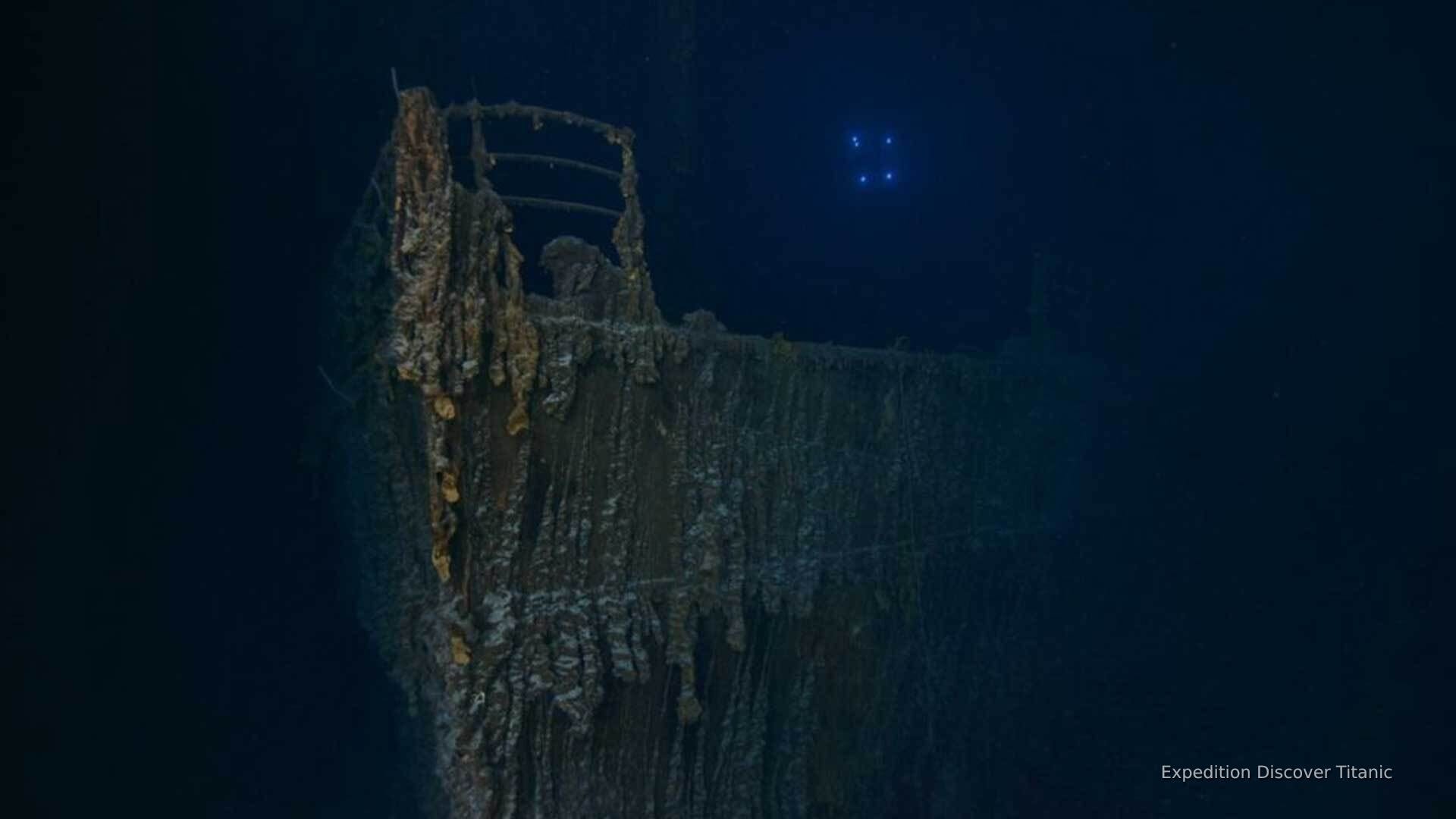A 1.7 million-ton iceberg sank Titanic. A tiny microbe is making the ship disappear.
An iceberg estimated at 1.7 million tons sank the White Star liner Titanic in 1912 and took the lives of more than 1,500 people on a night the world may never forget.
But while Titanic endures in our memories, microorganisms too small to be seen with unaided eyes are relentlessly eating away at the ship's metal, making it rust, dissolve and (eventually) disappear.
The microbes “can actually use the wreck itself as a source of energy,” says Erin Field, a microbiologist and associate professor at the Department of Biology at East Carolina University.
Some researchers say the ship could collapse by 2030. Others give it hundreds of years.
Learn more: "Lost Titanic statue" rediscovered
Dives to Titanic over more than a decade have shown the ship is falling apart. But recent evidence of increased deterioration – including the loss of an iconic 15-foot section of railing on the port side of the ship’s prow – is driving home the point.
The railing, an indelible part of pop culture since the 1997 blockbuster movie “Titanic,” has become a prime example of Titanic’s worsening condition.
It can be seen lying on the seabed beneath the ship's port anchor in the latest photos of the wreck site, taken by the RMS Titanic Inc. expedition in July.
What bacterium is eating at Titanic?
Can't see our graphics? Click here.
A number of factors are breaking down Titanic, including undersea currents, corrosive salt water and a microbe, a metal-hungry bacterium. The microbe is known as Halomonas titanicae.
Halomonas is a type of “salt-loving" bacteria. "Titanicae" is Latin for "Titanic."
Oceanographer and marine geologist Robert Ballard found Titanic in 1985. Photos from those dives “weren’t very detailed,” says Smithsonian Magazine.
Ballard revisited the wreck site in a submersible when he returned with a National Geographic film crew in 1986. That’s when he saw icicle-shaped formations of rust all over the ship, porous and fragile formations he dubbed “rusticles.”
It took decades to find Titanic
Samples of Titanic's rusticles were removed, placed in sealed containers and brought to the surface in 1991. DNA sequencing of the microbes in the rusticles revealed Halomonas titanicae.
How is the bacterium 'eating' Titanic?
Titanic’s hull is constructed of steel plates about an inch thick – steel is a combination of mostly iron and carbon – held together by rivets made of steel and wrought iron.
The process starts when a ship sinks. When it hits the ocean floor, a vast collection of microbes get to work:
- Microbes already on the ship.
- Microbes in the water.
- Microbes in the seafloor sediment that’s disrupted when the ship reaches the seafloor.
Marine microbes need nutrients such as carbon, nitrogen, phosphorus and iron to develop and reproduce. Those nutrients aren’t easily found in the ocean.
When they can, microbes attach themselves to undersea surfaces, including sunken ships. "When a wreck occurs, the ship becomes a new habitat," Field says.
The microbes form biofilms, an extra layer of cells, around themselves for protection. Other microbes do the same. Together, they form communities that grab nutrients floating in the water.
But the microbes also need oxygen for energy, and their biofilms can reduce the amount of oxygen they take from the water.
On the Titanic, if oxygen becomes scarce, Halomonas titanicae and other microbes can extract energy from the iron in the wreck.
In essence, the microbes break down the metal from one form of iron to another. In the process, the iron is oxidized, or converted to rust, and the microbes get energy from electrons as oxygen atoms take electrons from iron atoms in the steel.
The rusticles form during those biological and chemical reactions.
“Rusticles are evidence of the chemical oxidation of that iron,” Field says. Other microbes in the rusticles can also oxidize the iron.
The microbes “keep using iron in the wreck and turning it into these rusticles as it gets oxidized,” she says.
What else is affecting Titanic's deterioration?
Undersea currents
The U.K.’s Royal Meteorological Society notes that ocean currents played a part in sinking Titanic by “bringing sea ice and icebergs to the area" where the collision took place in April 1912.
Ocean currents, specifically underwater ones, are still affecting Titanic.
The ship sank about 430 miles southeast of Newfoundland and lies at a depth of 12,500 feet. The wreck site is near the Western Boundary Undercurrent, a fast-moving river of seawater that flows southwest along the U.S. Atlantic continental margin, the zone between coastal waters and deep ocean.
That current, and others in the area, create disturbances in the water that "will cause the wreck to break apart as it weakens," the BBC says.

Saltwater corrosion
Halomonas titanicae isn't the only factor in Titanic's deterioration. Saltwater corrodes metal five times faster than freshwater, "weakening it and causing it to fall apart," according to sciencing.org.
"Chlorides associated with the salts are attacking the surface of the wreck and making that iron available to oxidize with oxygen," Field says.
As we've seen, iron rusts when it loses electrons to oxygen atoms, a process called oxidation. Salt water speeds up oxidation because ions, atoms with electrical charges, move more freely in saltwater than in pure water. That increases the movement of electrons from iron surfaces.
Source: Paste BN Network reporting and research; RMS Titanic Inc.; Royal Meteorological Society; NASA; Reuters; sciencing.org; biolabtests.com